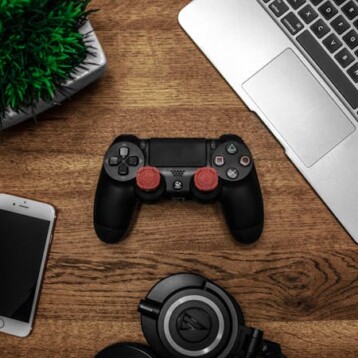Pandora was developed in order to provide the growing demand for an UMPC that can run ‘heavy’ games; it is designed as an ultra portable open-source computer with gaming controls which can easily fit in the users’ pocket. The “open-source” design means that almost any developer can create games and applications for Pandora. Furthermore, Pandora’s developers encourage customers to add, change, and request additions and modifications to the device’s API through the Pandora forums.
While most micro-sized PCs have limited processing power, the Pandora has relatively powerful hardware based on an ARM Cortex-A8 CPU with a clock speed of 600 MHz and a 430-MHz TMS320C64x+ DSP Core. The relatively small (by UMPC standards) 4.3″ widescreen LCD has a good 800×480 resolution with 16.7 million colors. Despite its size the device does have an S-Video output, allowing it to connect to a TV so that the user can play games on a larger display.
Pandora has standard WiFi connectivity (802.11b/g) and can retrieve data via a USB jack or via its dual SDHC card slots. The Pandora’s interface is supposedly fairly straightforward using a mini-QWERTY (43 buttons version) keyboard as well as dual analogue and digital gaming controls similar to those found on the Nintendo Wii, Sony PSP, and Microsoft’s X-Box. In this way, anyone who has played games on another console will be able to pick up the Pandora and just ‘play on’. The simple clamshell design is supposed to give maximum protection and maximum control layout; the battery life, according to the developers, is about 10 hours (standby).
Being open source, Pandora’s natural selection for its OS was Linux. Accordingly, the implementation of Microsoft’s DirectX was impossible. However, it does have a PowerVR SGX OpenGL 2.0 ES compliant 3D hardware, which the developers are hoping will provide an equal gaming experience. Currently, the main drawback of this UMPC/gaming console is that there are few compatible games; moreover, THE $330 price tag might be too high for some young potential buyers.
TFOT recently covered many of the UMPCs exhibited at the Cebit 2008 Show. Other UMPCs covered by TFOT in the past include the OQO Model 02 and the Butler. Another related TFOT story is Microsoft’s new interface, called LucidTouch, which can enhance current touch-screen applications.
The shipment of Pandora to developers is scheduled for around April-May 2008. The general public will have to wait until around June or July this year. Initially, the Pandora will be sold in the UK, USA, Germany, and Turkey. For more information, see the Pandora’s website.









